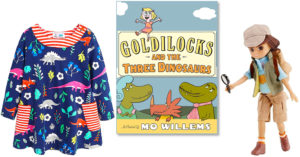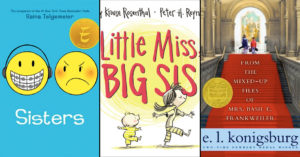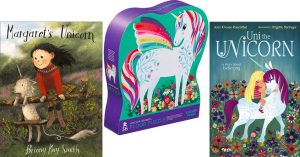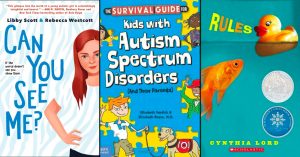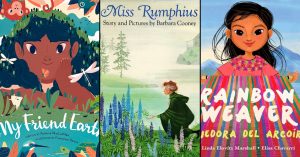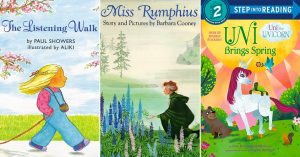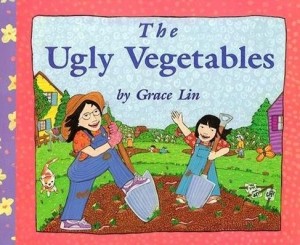 By Lili Sandler, A Mighty Girl Senior Research Intern
By Lili Sandler, A Mighty Girl Senior Research Intern
Each May the United States celebrates the history and culture of Asians and Pacific Islanders in the U.S. during Asian-Pacific American Heritage Month. The month of May was selected to commemorate the diverse and important roles of Asian-Pacific Americans for two reasons. First, early Japanese immigrants arrived in the United States on May 7, 1843, and second, the transcontinental railroad -- built predominantly by Chinese immigrants -- was completed on May 10, 1869.
Asian-Pacific heritage encompasses a broad and diverse array of cultures from an expansive geographic region. All of the Asian continent, as well as the Pacific islands of Polynesia, Micronesia, and Melanesia are included in this celebration. In honor of the essential role all of these cultures play in modern-day American culture, we’ve selected a dozen books which tell different stories of Asian-Pacific American girls. We’ve organized these selections by the age group for which they’re intended, and hope that you’ll enjoy our choices as much as we do!
BOOKS FOR YOUNG READERS
![1597020095_lg[1]](https://www.amightygirl.com/wp/wp-content/uploads/2013/05/1597020095_lg1-242x300.jpg) In Julie Black Belt: The Kung Fu Chronicles (age 5 and up), readers are introduced to the art of Kung Fu, as well as the precocious and engaging main character, Julie. Julie is pretty sure she’ll have a black belt in no time, but soon learns how much practice and discipline is required to advance in martial arts. Illustrated in a fun, cartoon style, and complete with diagrams showing various martial arts moves, this book will delight any young martial artist!
In Julie Black Belt: The Kung Fu Chronicles (age 5 and up), readers are introduced to the art of Kung Fu, as well as the precocious and engaging main character, Julie. Julie is pretty sure she’ll have a black belt in no time, but soon learns how much practice and discipline is required to advance in martial arts. Illustrated in a fun, cartoon style, and complete with diagrams showing various martial arts moves, this book will delight any young martial artist!
Addressing subjects such as the internment of Americans of Japanese heritage during World War II is a difficult task for a children’s book. In Eve Bunting’s So Far From the Sea (age 5 - 9), the author does so with grace. She tells the story of Laura, a young Japanese-American girl going to visit her grandfather’s grave at a former internment camp before she and her family move away and will no longer be able to pay their respects in person. Both historically accurate and beautifully illustrated, this book is a touching way to share a dark period in American history.
In Star of the Week: A Story of Love, Adoption, and Brownies with Sprinkles (age 4 - 8), author/illustrator and wife/husband team Darlene Friedman and Roger Roth share the story of a young girl who is taking her turn at being the “Star of the Week” in her Kindergarten class. This means she gets to bring in a special treat — she and her mom make brownies! — and she also gets to make a poster with photos from her life. The only problem is that she doesn’t have any photos of her birth parents from China, where she was adopted. Friedman and Roth used their own family as a model for this story about adoption, love, and what it means to be a family.
Flower gardens are often a sight to behold, but vegetable gardens are sometimes, well, not. Grace Lin, in her first picture book, The Ugly Vegetables (age 3 - 8), describes a little girl’s desire to have a beautiful garden full of flowers like her neighbors. Instead, her mother’s garden is overflowing with prickly, fuzzy, wrinkly, viney things that are anything but attractive. But when the time comes to harvest those funny-looking vegetables, they create a soup so delicious that the whole neighborhood wants a taste!
BOOKS FOR INTERMEDIATE READERS AND TWEENS
![the+great+wall+of+lucy+wu[1]](https://www.amightygirl.com/wp/wp-content/uploads/2013/05/the+great+wall+of+lucy+wu1-202x300.jpg) In the Newbery Award-winning novel Kira-Kira (age 10 - 14), author Cynthia Kadohata tells the tale of the Japanese-American Takeshima family in 1950s Georgia. Middle sister Katie has nothing but admiration and respect for her elder sister, Lynn, but when Lynn becomes sick with lymphoma, Katie must become the stronger sister, providing hope and honesty for the whole family. A poignant story told from Katie’s perspective, this book delves into issues of racial prejudice, illness, and perseverance, and manages to do so with an overwhelming sense of optimism.
In the Newbery Award-winning novel Kira-Kira (age 10 - 14), author Cynthia Kadohata tells the tale of the Japanese-American Takeshima family in 1950s Georgia. Middle sister Katie has nothing but admiration and respect for her elder sister, Lynn, but when Lynn becomes sick with lymphoma, Katie must become the stronger sister, providing hope and honesty for the whole family. A poignant story told from Katie’s perspective, this book delves into issues of racial prejudice, illness, and perseverance, and manages to do so with an overwhelming sense of optimism.
The Great Wall of Lucy Wu, by Wendy Wan-Long Shang (age 8 - 12), is told from the perspective of the title character: sixth-grader, basketball player, and interior designer extraordinaire. When Lucy discovers that she’ll be sharing her room with her great aunt, she is anything but thrilled. However, her great aunt’s presence helps remind Lucy that she is much more than a 12 year-old American girl. She hails from a rich and fascinating past, and in sharing her room with her family elder, she discovers how proud she is to be of Chinese descent.
With inter-chapter discussions between the protagonist and the author, Newbery Award-winning author Linda Sue Park presents first generation Korean-American Julia Song in her first book with a contemporary setting, Project Mulberry. Julia and her best friend, Patrick, are optimistic that they can win a blue ribbon at the state fair, but the question is, how? When Julia’s mother suggests raising silkworms, Patrick is all for it, but Julia resists the idea. Julia learns a lot about where racial prejudices come from, what it really means to be “American”, and in a unique spin, about the author of the book herself through their lively discussions at the end of most chapters.
The first book in the Pacy Lin Series, The Year of the Dog (age 7 - 10) introduces us to fourth grader, Grace, known as Pacy to her family and close friends. Pacy’s own experiences are integrated seamlessly with stories of her parents’ experiences growing up in Taiwan, offering comparisons between the childhoods of the two generations. Pacy is able to find a balance between her Taiwanese heritage and her American lifestyle, embracing and celebrating both, in this sweet and heartwarming story.
BOOKS FOR TEENS
In Born Confused, author Tanuja Desai Hidier introduces us to American-born Dimple Lala, daughter of Indian immigrants. Almost 17 years old, Dimple struggles with many typical teenage issues: romance, school, friends, and dealing with parents, but she also must grapple with cultural issues to which her friends seem blissfully immune. Told through Dimple’s intelligent, amusing, — and sometimes sarcastic — voice, Born Confused is a heartwarming and realistic story of a first-generation Indian-American girl.
Straddling two — or more — cultures can be a difficult balancing act for anyone, and perhaps most especially for teens. In Justina Chen Headley's Nothing But the Truth (and a few white lies) (age 13 and up), “hapa” (half Asian) Patty Ho approaches being both Taiwanese and white with humor, brains, and heart. While Patty isn’t thrilled with being half-anything, during her forced math camp over summer break she learns a lot about truth, and a lot about herself in the process.
16 year-old April Chen, like many teens, is trying to find her own identity, both as a young woman and as a Chinese-American in Lensey Namioka’s April and the Dragon Lady (age 12 and up). But for her grandmother, “the Dragon Lady”, April is never Chinese enough. As the only girl in the family, April is expected to care for her aging grandmother, regardless of the equal abilities to do so of her brother and father. April struggles to balance respect for her family with pursuing her own goals, and ultimately finds that she must pave her own path.
A collection of essays, poems, and stories, YELL-Oh Girls! Emerging Voices Explore Culture, Identity, and Growing Up Asian American (age 13 and up) tackles many of the real issues young Asian American girls are facing. From culture clashes to body image, interracial dating to adoption, editor Vickie Nam includes background information and analyses of the essays included in her book. Perhaps most powerful are the submissions written by teenaged girls themselves, from all over the country, sharing their own perspectives on and experiences in growing up as Asian-American girls. A testimony to strength, the theme of YELL-Oh Girls is summed up in the conclusion of the book’s forward, written by Phoebe Eng: “And for Asian-American women, let’s work on making our voices and dreams big and impactful. The result will be nothing less than a powerful kind of sisterhood we’ve been wanting for a very long time.”
Recommended Resources
- For more books starring Asian American girls and women, visit our special feature on the Top Asian Pacific American Mighty Girl Books.
- For more fiction selections, visit our Asian-American fiction section.
- For more historical fiction and history selections, visit our Asian-American history section.
- For more Mighty Girl stories about adoption, including several starring girls adopted from China, visit our Adoption section and also check out the documentary Found in China for ages 10 and up.









![born[1]](https://www.amightygirl.com/wp/wp-content/uploads/2013/05/born1-209x300.jpg)
